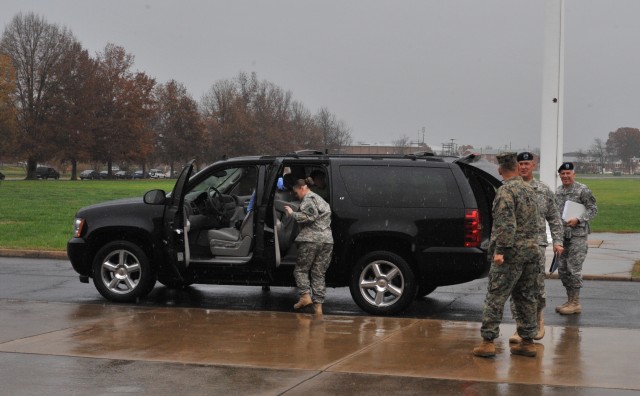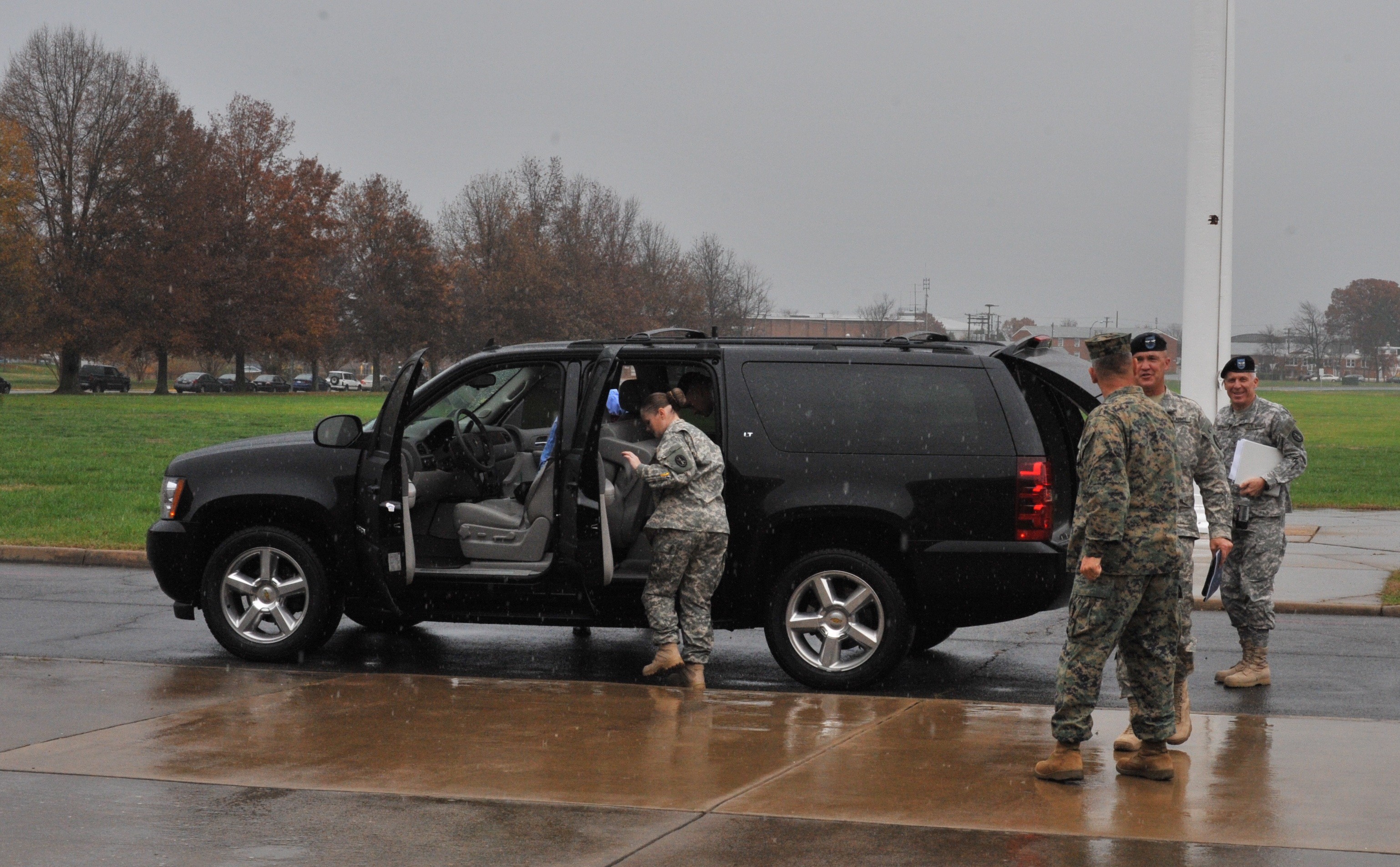
MARINE CORPS BASE QUANTICO, Nov. 19, 2009 -- The U.S. Marine Corps has faced organizational challenges in working to provide Marine component resources to Joint Force Headquarters National Capital Region, briefers acknowledged to JFHQ-NCR Commander Maj. Gen. Karl R. Horst Thursday.
Yet through the contributions of the Marine Corps -- from a pair of Marine's rock-steady hold on a heavy casket in a joint service funeral, or a senior officer stepping up to lead the J3 Operations team at Fort McNair, to the coordinated planning and the execution of joint missions -- the gung-ho spirit has prevailed.
"I can talk Marine," JFHQ-NCR Commander Maj. Gen. Karl R. Horst, an Airborne Infantryman, told his hosts at the outset, setting the tone for an afternoon of frank talk, shared concerns and close attention not just to what the Marines bring to the joint effort but to the nuances of who and how and how much.
"We need to get a little deeper," Quantico Commander Col. Daniel J. Choike said, suggesting that command and control and matters of expectations and operational planning for events such as the Marine Corps Marathon merit study. While flagging next year's proximity of the Army Ten-Miler to the Oct. 31 Marine Corps event as a period of Joint Force concern, the leaders spent the next few hours digging into the history, mission, tasks, organization, leadership and staff support - for Quantico as well as MARFORNCR, JFHQ-NCR's conduit to the Marine Corps' capabilities.
Post 9/11 the initial U.S. Marine Corps organization created to coordinate emergency preparedness and anti-terrorism and force protection measures in the National Capital Region was Marine Corps National Capital Region. Marine Col. Mark Kauzlarich, G7 for Marine Corps Base Quantico, related. A year later in FY 2003 with MCNCRC implementation pending, Marine Forces National Capital Region (MARFORNCR) formed as the service component to support JFHQ-NCR operations.
All were and are within the command of the commanding general of Marine Corps Combat Development Command, Kauzlarich said.
Kauzlarich, new this summer to the NCR, is the primary interface between JFHQ-NCR and MARFORNCR. He is assistant chief of staff to the base commander, Col. Daniel J. Choike, MARFORNCR's deputy commander, delegated day-to-day responsibilities by Lt. Gen. G. J. Flynn, primarily focused on running the Marine's Combat Development Command, whose mission is Marine readiness worldwide.
"We both know he's the boss," Choike explained. "I need to keep him advised of what we are doing, but he is not interested in coming here to run things." Choike is deputy to Flynn for MARFORNCR and for MCNCRC, which still exists in some form, according to Kauzlarich despite never being fully implemented and being renamed Marine Corps Installations National Capital Region during an installation regionalization initiative between 2003 and 2005, implementation of which was itself "put on hold."
Flynn wears still other hats: as commander of Marine Corps Forces Strategic Command and Marine Forces Cyber Command and as deputy commandant for Combat Development and Integration.
Installation management shakeups and Base Realignment and Closing initiatives have impacted both the Army and the Marine Corps. The Army "has never been without organizational challenges," Horst confided.
As senior mission commander, he shares oversight, but not direct control over Joint Base Myer-Henderson Hall, the Army-Marine facility where the Marine Corps' Headquarters and Service Battalion is now a tenant. Inquiring on how the administrative merger was working from the Marine Corps viewpoint, Horst was told the change has been "transparent" for the supported Marine mission.
Kauzlarich went on to describe the process through which his team - the staff nucleus of MARFORNCR, many of them Individual Mobilization Augmentees - provides input for JFHQ-NCR plans and orders and, when a plan is developed or an order is issued, works through it line by line to prepare a MARFORNCR plan or order in support, the latter which is then furnished then to the Marine Corps tasking authority.
JFHQ-NCR J3 deputy director Marine Col. John Neumann credited the staff work coming from MARFORNCR as being thorough and thoughtful, not only on Marine Corps aspects, but credited planners attending meetings as being well prepared, contributing helpful insights for the overall planning process.
A number of the joint plans MARFORNCR supports might entail employment of the Chemical, Biological Incident Response Force, a Marine Corps unit stationed at Indian Head, Md., or use of hard stand and billeting capability on Quantico, primarily a World War II-era facility that has trained Marine officers, commissioned and noncommissioned alike, and primarily used for Marine reservist training now.
"Camp Upshur has done a lot of training over the years and has not changed, just more paint," Kauzlarich said, recalling his own time there in the 1970s.
"Like Fort Benning ... just more paint," Horst nodded with a personal understanding, a prelude to on-site inspection of the facility along with Choike and Lt. Col. Craig Wick, head of the Reserve Support Unit at Quantico who is in charge of ongoing rehabilitation of many of the units.

Social Sharing